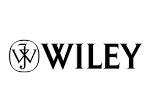Resource information
One challenge in the effort to conserve biodiversity is identifying where to prioritize resources for active land management. Costâbenefit analyses have been used successfully as a conservation tool to identify sites that provide the greatest conservation benefit per unit cost. Our goal was to apply costâbenefit analysis to the question of how to prioritize land management efforts, in our case the application of prescribed fire to natural landscapes in Wisconsin, USA. We quantified and mapped frequently burned communities and prioritized management units based on a suite of indices that captured ecological benefits, management effort, and the feasibility of successful longâterm management actions. Data for these indices came from LANDFIRE, Wisconsin's Wildlife Action Plan, and a nationwide wildlandâurban interface assessment. We found that the majority of frequently burned vegetation types occurred in the southern portion of the state. However, the highest priority areas for applying prescribed fire occurred in the central, northwest, and northeast portion of the state where frequently burned vegetation patches were larger and where identified areas of high biological importance area occurred. Although our focus was on the use of prescribed fire in Wisconsin, our methods can be adapted to prioritize other land management activities. Such prioritization is necessary to achieve the greatest possible benefits from limited funding for land management actions, and our results show that it is feasible at scales that are relevant for land management decisions.



